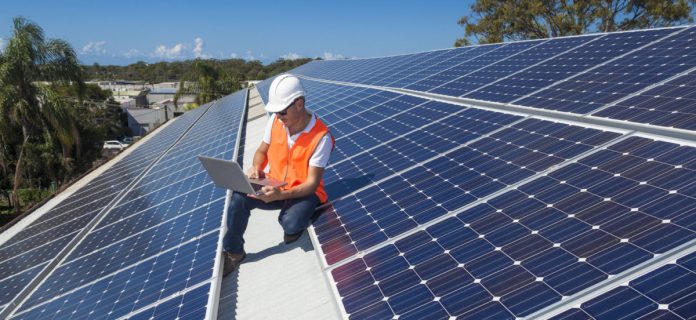The number of Australian rooftop solar systems that can be labeled as unsafe or potentially unsafe has drastically declined, proving the efficiency of solar safety measures introduced to protect both installers and consumers.
A new report from Australia’s Clean Energy Regulator (CER) assessing the safety risks associated with rooftop PV has found a significant decline in the number of substandard solar systems below 100 kW in size, with just 1.7% of inspections of 2018 installations classified as unsafe (0.7%) or potentially unsafe (1%).
These results are a vast improvement on figures from 2015, when 5.5% of inspections produced negative results (0.7% unsafe and 4.8% potentially unsafe). From the beginning of record-keeping in 2010, up to 2018, 3.3% of all systems inspected were classified as unsafe (0.7%) or potentially unsafe (2.6%).

“Unsafe” is the most adverse rating in the Small-scale Renewable Energy Scheme (SRES) inspections program assigned to those PV systems that have “a safety hazard which poses an imminent risk to a person or property.” According to CER, there is a small number of inspections where the PV system does pose an imminent safety risk, such as when there are exposed live parts and nonsecure PV panels.
However, water ingress in DC isolators (a disconnect switch) has been identified as the biggest threat and the most common cause for PV systems to be labeled unsafe. While the degree of water ingress varies and in most cases, the DC isolator may become unsafe without timely maintenance, this should not pose an imminent risk, the report states.
Weakest link
Often referred to as the weakest link in the rooftop PV safety, DC isolators were mandated in Australia in 2012 through the Australian Standard for PV installations (AS/NZS 5033). This made Australia the only country in the world requiring rooftop DC isolators. Since then, they have been proven by inspection data to be the largest single source of conventional DC solar system failures.
While the Standards Australia Committee has yet to undertake a full review and determine whether the installation of DC isolators should continue to be mandatory, the industry has been lobbying against this safety mechanism on the grounds that it has caused more harm than good. The Clean Energy Council (CEC) has called for a rule change, saying the DC isolator inside the inverter, rather than as a separate switch near the inverter, is the best solution to prevent water ingress.
Overall, 74% of the inspections of PV systems installed from 2010 to 2018 have rooftop DC isolators and 84% of these have DC isolators near the inverter, the CER found. According to the report, a small proportion of DC isolators were also incorrectly wired or installed.
While AS/NZS 5033 recommends owners have their PV system inspected regularly and annually for many system components, including DC isolators, regular inspections are not required under state and territory electrical safety laws. Another disadvantage of isolator components is that they can degrade from environmental exposure due to specific installation methods and product type, increasing the likelihood of water ingress and ultraviolet radiation damage and, as a result, DC isolators may need to be replaced within the life of the panels of a PV system.
Therefore, the report recommends state and territory governments consider whether the potential safety risks from the requirement for a rooftop DC isolator outweigh the benefits. Another recommendation refers to removing the requirement for a DC isolator near the inverter and require the wall isolator to be located inside the inverter. Such changes can be pursued through the current standards review process, while in the meantime, the simple way to avoid DC isolators would be to install a smart solution that does not use high voltage DC, such as microinverters.
Maintenance checks
The CER report also found that other safety risks are at levels similar to general electrical work. However, it underlined the importance of regular maintenance and recommends introducing mandatory PV system inspections or educational programs to encourage PV system owners to have a qualified person do regular inspections.
“More than one in five Australian households have solar on their roofs, and what this report tells us is that the vast majority of these systems are installed safely and in line with the industry guidelines set out by the Clean Energy Council’s Solar Accreditation program,” said CEC Chief Executive Kane Thornton. “While these results are trending in the right direction, there is still work to be done. The report highlights the need for regular solar power system maintenance, and the need to raise consumer awareness about the need for an annual maintenance schedule, just like servicing your car.”
Thornton said there are two ways people can ensure their solar is being installed correctly, by choosing an Approved Solar Retailer and by making sure the installer who completes the work is accredited by the Clean Energy Council. All accredited installers have a date stamped digital ID card that they can show on their phone.
“The small-scale solar and storage industry has done a good job of earning the trust of Australians. Now we need to maintain this trust by continuously improving our safety levels. By enabling Australians to make the switch to rooftop solar with peace of mind, they can reduce their energy costs while combatting climate change and accelerating our transition to a clean energy future,” Thornton said.






